Wondering about how many solar panels are needed to charge an electric car?
In this guide we’ll give you good planning numbers and important information regarding installing a solar recharge setup in your home.
Why You Should Charge Your Electric Car with Solar Panels
Using solar energy to charge your EV multiplies the benefits of having an electric car.
In general, the cost of grid power is way higher than that of solar energy. Plus, the cost of using the power grid goes up over time.
Solar panels continue to produce energy at the exact same cost. These panels will soon reimburse the initial investment you'll make.
Furthermore, switching to renewable energy as a source of fuel is not just inevitable but also a step in the direction of an independent future.
Not to forget that the environment will be grateful to you for the switch! Solar energy pollutes the environment much less than grid power does.
And with the current scenario of climate change and the harmful effects that pollution poses, the switch is necessary to make a difference.
Overall, solar energy is a better choice than grid power in every aspect, including economic and environmental.
What Equipment Do You Need To Recharge an Electric Car?
In order to use solar panels to charge your car, you will need a few things.
These include a home charging unit and a PV inverter unit that will convert the solar energy acquired into DC supple so the vehicle can use it.
But the burning question that every EV owner looking to switch to solar charging has is this; 'how many solar panels to charge an electric car?'
How Much Does It Cost to Charge with Solar vs. a Charging Station?
There are three ways you can charge your electric vehicle, and the cost of charge will vary according to which one you choose.
1. Public Charging Station
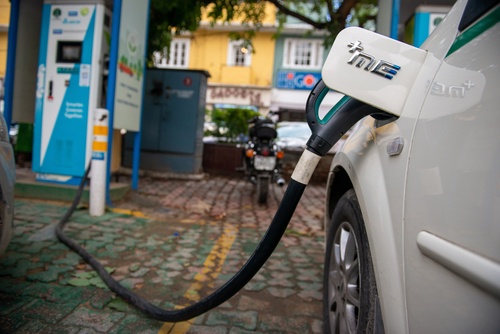
The use of public charging stations to top up your fuel is inevitable if you're going out with your EV.
There are free public charging stations as well. However, most of the time, you're going to have to pay to power up your vehicle, which can be costly.
Prices for charging via public station vary according to the location. Tesla charging stations cost $.28/kWh, whereas Blink has a minimum fee of $.38/kWh for standard charging and a maximum fee of $.69/kWh for fast charging. This proves to be around 2 to 5 times more expensive than at-home grid charging.
2. At-Home Grid Power
The cost of power from the grid is whatever you are paying at the moment per kilowatt-hour.
This varies between $.10 and $.40 in the US, depending upon where you reside, and the average is $.13 kWh.
Data from the US Department of Transportation states that an average American drives about 13,500 miles per year or about 40 miles per day.
A kWh of battery charge will provide power for about 3 to 4 miles, so more or less 12 kWh will get you through a 40-mile trip each day, with an average cost of $1.56. This can be subject to change if the electricity cost goes up.
3. At-Home Solar Power
Getting a solar panel system installed at your home is expensive. It may require you to take a solar loan you can pay over time.
However, it is still a wise investment compared to the electricity charges over the next 25 years. To find the charging cost via at-home grid power, you need to calculate the levelized cost of energy or LCOE.
This value tells us the total installation cost of the electricity generated by the solar panels in their lifetime, and it is adjusted according to inflation.
Before the application of the federal solar tax credit, the LCOE for home solar in the US was $.11/kWh, and as of now, the average solar installation cost is $3.00 per watt.
When Charging with Solar isn't a Good Idea
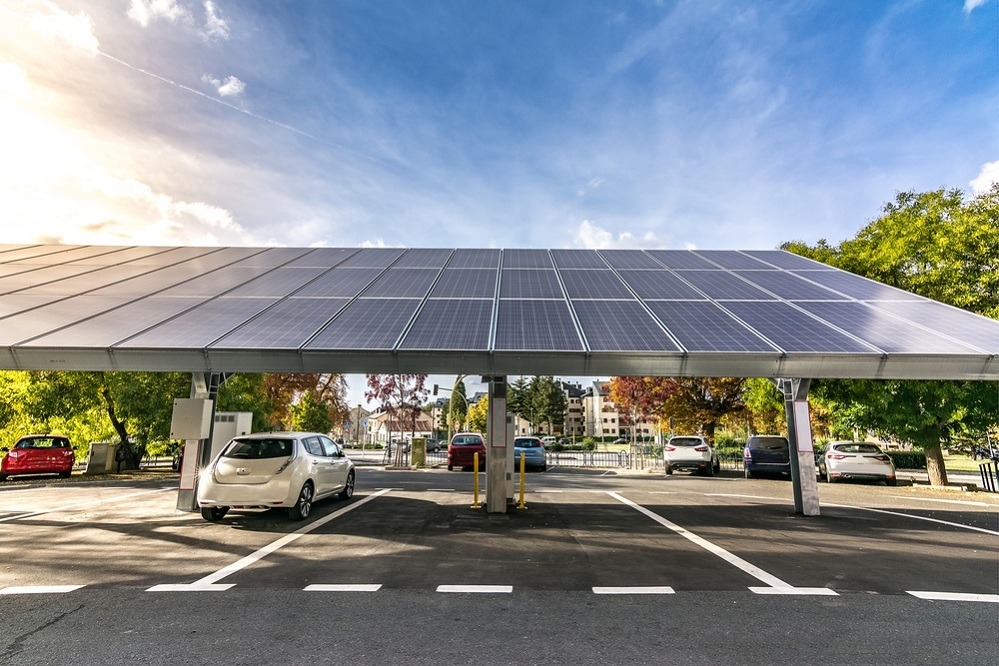
Switching to solar charging if you have an electric car is a big decision and requires quite a bit of understanding.
There are a few situations in which it will minimize the benefits of making the switch.
Let's take a look at instances where charging with solar isn't a good idea:
At-home solar panel systems require a hefty investment which may not be feasible for young homeowners who tend to move a lot.
If you're in a state like Louisiana, where the electricity bills are less than the national average, you may not see a considerable saving after the installation of a solar panel system.
There can be other specific cases where solar charging will not be the best option.
For example, if your state doesn't offer net metering, this isn't a good option. If your roof is shaded and gets little to no light, a collar charging system won't be useful to you.
Plus, if the overnight energy prices of your utility are low on a TOU plan, then solar charging likely isn't the ideal option.
EVs with Solar Panels: What About Them?
The idea of having solar panels on electric cars has been abundantly debated but doesn't seem like a practical possibility as of yet, unfortunately.
Even though the idea is phenomenal and will revolutionize transportation more, it still has severe limitations.
When installed on the rooftops of cars, solar panels only provide 3 miles of energy in one hour of charging.
This is because they are only converting 15%-20% of the solar energy they receive. It doesn't make this application of solar panels practical as it is highly inefficient.
How to Charge an EV with Solar Power
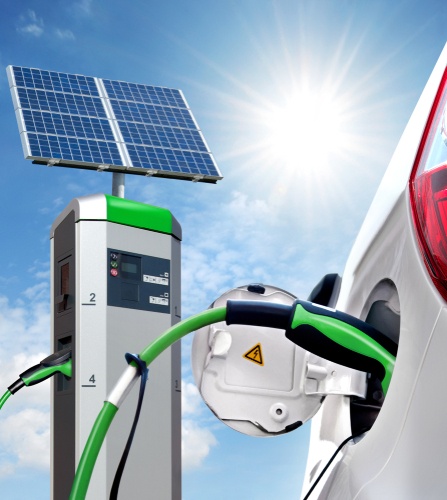
After understanding the impact electric cars are making and how switching to solar energy can add to it, it's essential to precisely understand how to employ a solar panel system to charge an EV.
Here's a simple breakdown of how you can charge your electric car using solar panels:
How Much Energy in kWh Do You Consume Per Day?
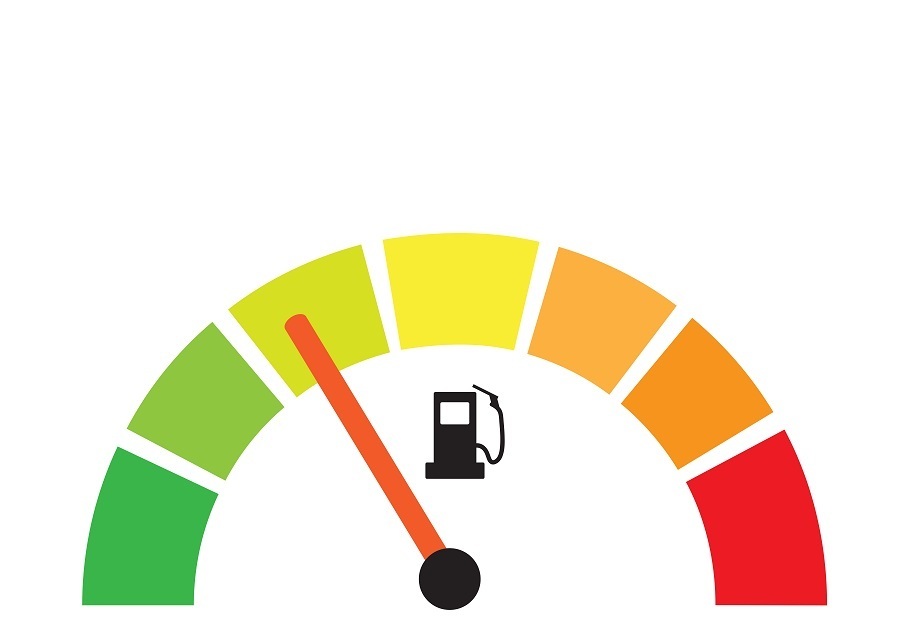
In order to determine the energy in kWh consumed per day, you need to figure out the number of miles your car is driven in a day. If you keep track of the yearly mileage, this will be a piece of cake.
However, if you don't have an idea, use the average number of miles traveled per day according to data.
According to the United States Department of Transportation data, an average American citizen drives about 13,500 miles per year or about 40 miles per day.
Depending upon the electric car efficiency, you will consume about 10 and 17 kWh of electricity per day.
Popular EVs Sorted by Efficiency
Model | kWh for a daily range of 40 miles |
|---|---|
Tesla Model S | 12.4 |
Tesla Model Y Standard Range | 10.4 |
BMW i3 | 12 |
Chevy Bolt | 11.6 |
Tesla Model X | 12.8 |
Volkswagen ID.4 | 14 |
Kia Niro | 12 |
Nissan Leaf | 12 |
Porsche Taycan 4S | 16.8 |
Mini Cooper SE Hardtop | 12.4 |
Hyundai Kona | 11.2 |
How Many Solar Panels Do You Need to Charge Your EV?
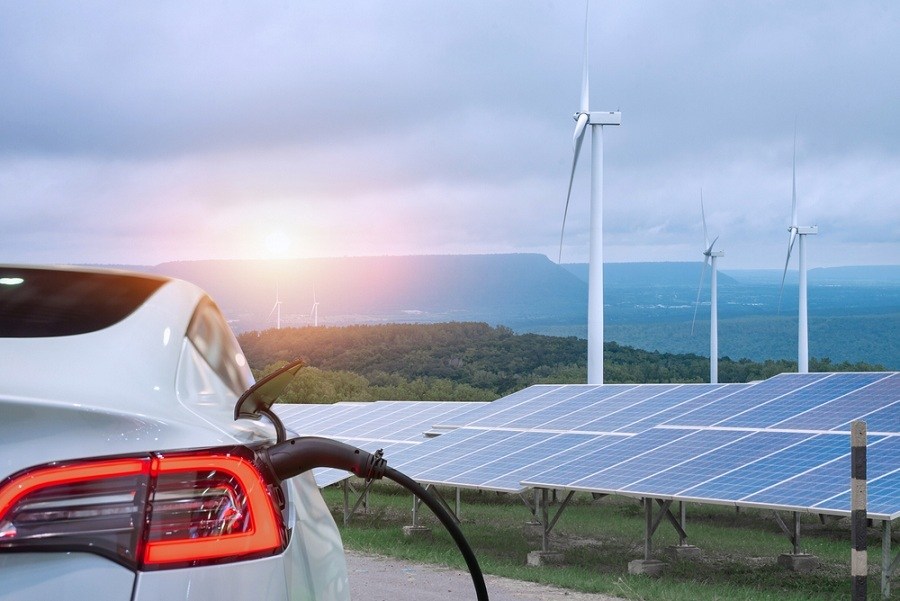
The number of solar panels you need to install depends upon the size of your car battery, your car usage, and your solar panel efficiency.
Let's use the Tesla Model S as a standard to try to understand this better. The requirements of your car will be different, but you can use the same method using relevant information from your car manufacturer and calculate an estimate.
The base model Tesla Model S has a 75-kWh battery capacity.
On average, a 250-watt solar panel can generate 30-40 kWh of AC power in a month, or about 1kWh per day.
Considering the lower limit of the solar panel capacity and the average 37 miles a day average distance traveled, a realistic solar panel set to keep your Tesla topped-up will consist of 12 panels. To fully recharge a Tesla Model S in one day will require 75 solar panels.
The higher the efficiency of the solar panel is, the lower the number of panels needed to be installed.
Similarly, if the distance traveled and usage is less than 30 miles, fewer panels are required.
Equipment You'll Need
It's not as simple as placing solar panels on your home roof and plugging your car in.
There is a proper procedure and specific equipment required.
For a standard and stable solar power system, the equipment needed is:
Summary
Investing in an electric car is already a step in the right direction and one likely we will all need to make to ensure a sustainable and green future.
Switching from fossil fuels is good for the environment in the long run as it reduces our carbon footprint.
The energy needed to charge your car will depend on a couple of things, including the car battery capacity and miles driven each day.
Installing home solar panels is the most efficient and economical way of charging your electric car in the long run. And you can enjoy the feeling of making a positive change for the betterment of the environment. It's a win-win situation!


